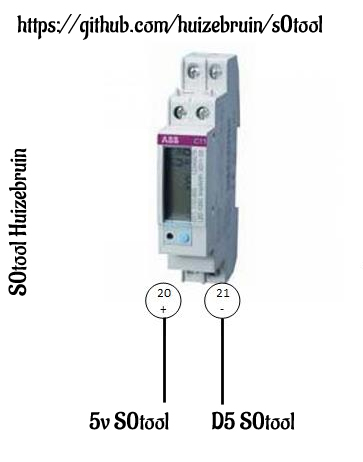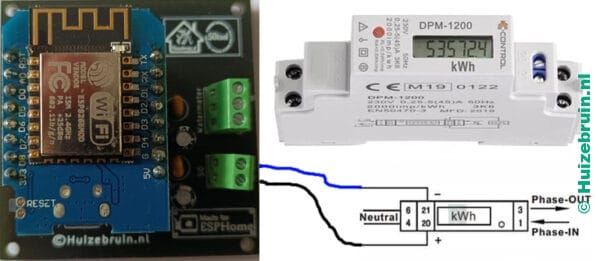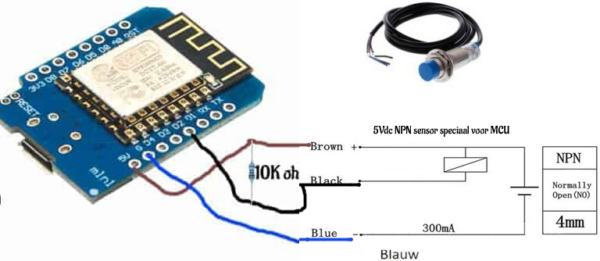Diy or Buy
DIY Water Counter
Build your own water counter using a Wemos D1 mini, an NPN sensor, and a 10K resistor. The 10K resistor should be connected between the 5V and D2 pins on the Wemos D1 mini, and from D2 to the signal wire of the NPN sensor.
- Connect one end of the 10K resistor to the 5V pin.
- Connect the other end of the resistor to D2.
- Connect D2 to the signal wire of the NPN sensor.
- Connect the ground wire of the NPN sensor to GND on the Wemos D1 mini.
This setup allows the Wemos D1 mini to reliably detect pulses from your water meter using the NPN sensor.
Hardware Requirements
- Wi-Fi: IEEE 802.11 b/g/n 2.4GHz
- Minimum ESPHome version: 2024.12.x
- Minimum Home Assistant version: 2025.01.x
- Works only with Wemos D1 mini V1 or V3.0 ESP8266 at this moment.
- You will also need a USB cable and a USB power adapter (at least 5V, 1A).
What You Need 🛒
- Wemos D1 Mini ESP8266: AliExpress or Amazon
- NPN Sensor: AliExpress, Amazon, or Dutch webshop Opencircuit
- 10K Resistor: AliExpress, Amazon, or Dutch webshop Opencircuit
- USB cable and USB power adapter (at least 5V, 1A).
Wiring Schematic
Unsure if your water meter is compatible? Check the list or ask in the GitHub Discussion.
How to Order the S0tool 🛒
You can order a ready-to-use S0tool from the Huizebruin Shop.
Note: When you buy a S0tool, you do not need to add a 10KΩ resistor yourself. The resistor is already placed on the PCB.
Currently, shipping is available to The Netherlands and Belgium only.
kWh Meter Integration
The S0tool can also be used to monitor your kWh meter, allowing you to track your energy consumption in real-time and integrate it into Home Assistant for better energy management.
- Ensure your kWh meter has an S0 output port.
-
Use a 10KΩ resistor for the S0 pulse input:
- Connect one end of the 10KΩ resistor to GND on the Wemos D1 mini.
- Connect the other end of the resistor to D5.
- Connect 5V from the Wemos D1 mini to port 20 of the S0 port.
- Connect D5 from the Wemos D1 mini to port 21 of the S0 port.
- Configure the S0tool in ESPHome or Home Assistant to read the pulses from the kWh meter.
The S0 Connection

Example setup:

For more details, visit the GitHub repository.
